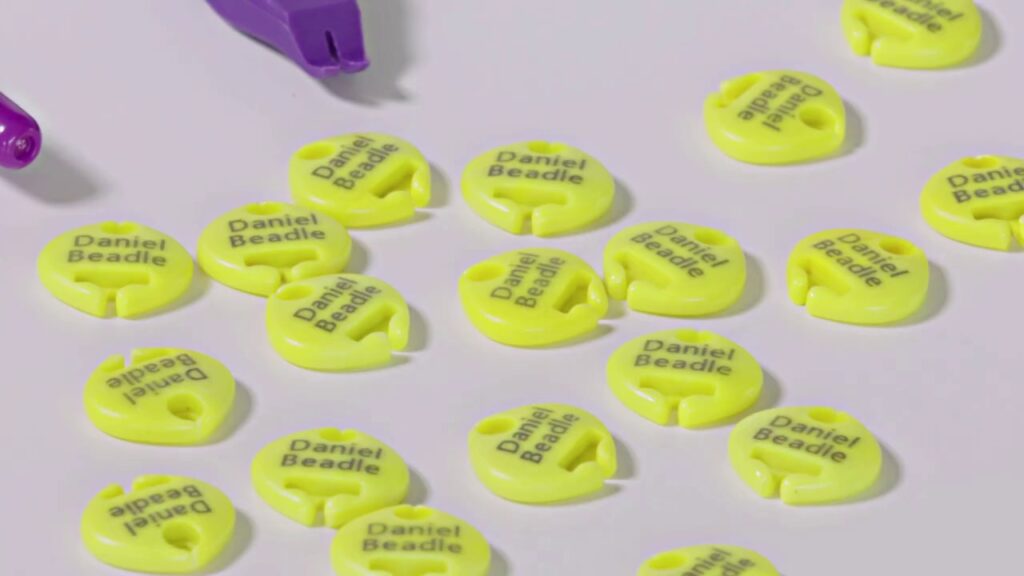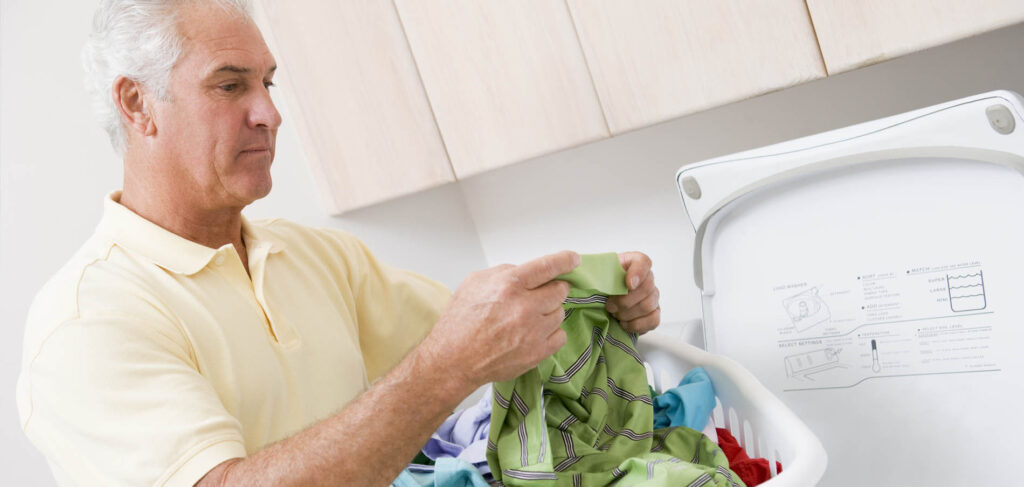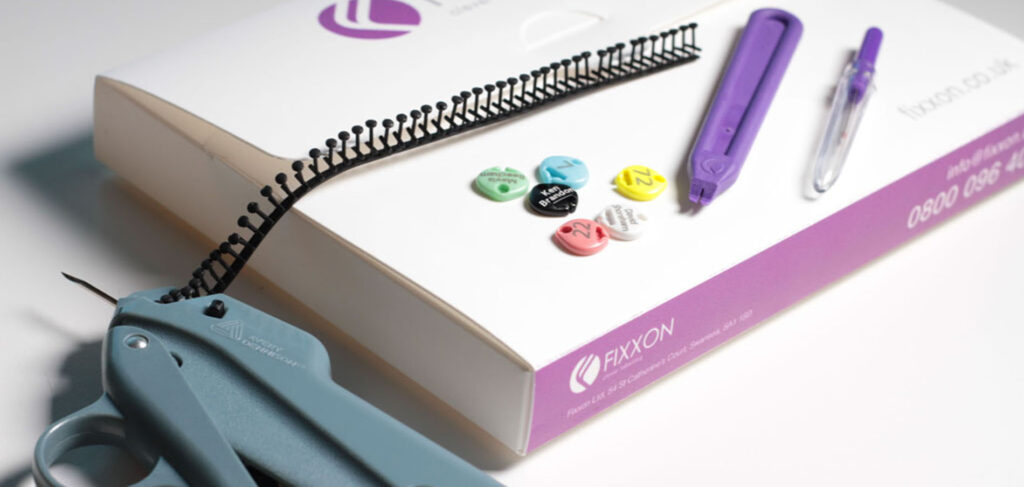Keeping track of clothing in a busy care home environment can be challenging. Items can easily get lost or mixed up, especially when residents gather to socialise in shared areas and all laundry is processed in a communal facility. With this in mind, it’s not surprising that one of the biggest causes for complaint in a care home is clothing going missing.
Losing clothing is not only inconvenient and costly, but it can also be upsetting for residents, especially if their items hold sentimental value. Dementia sufferers can become especially confused or distressed when they lose an item, or have to use an unfamiliar replacement.
Clothing labels are a simple solution for busy care homes, ensuring that items can be easily identified and returned to their rightful owner. While iron on clothing labels are widely-used for this purpose, they’re not always the best solution for the job, and with various other options available, it can be difficult to know which product to opt for. In this blog, we’ll take you through the different options on the market and weigh up the pros and cons of each.

Iron on name labels
Iron on fabric name labels are created with waterproof materials and adhesives. They’re usually affixed with heat by holding the iron on the label and applying pressure. The heat melts the adhesive into the fabric and creates a bond.
Pros:
-
-
- Cost effective – Iron on garment labels are typically affordable when bought in bulk and can be applied to a wide variety of materials.
- Easy to use – Once they’ve been ironed on clothes, a good quality product can withstand regular laundering and can last a long time.
-
Cons:
-
-
- Time consuming to apply – Each label typically requires around 15 seconds of heat and pressure to stick, and the time quickly adds up when you have lots of items to label. The adhesive usually only works once the iron reaches around 150–170°C, which can take some time depending on the quality and age of the model.
-
- Unable to adjust – If you want to reposition the label, you’ll need to remove the previous one completely and apply a new one. Once the adhesive has stuck once, it cannot be reused and the labels will need to be disposed of.
-
- Difficult to remove – There’s no easy answer to how to remove iron on labels. Some sources suggest using steam from the iron to loosen the label before trying to peel it off manually, which can be time consuming, messy, and leave sticky residue on the items.
-
- Can start to peel off – Some iron on fabric labels cannot withstand the thermal and chemical disinfection methods used in care homes, and can start to lift away from the fabric.
-
- Can be bulky – Personalised iron on labels can be thick and more noticeable on items of clothing.
-
- Irritating on skin – The thick, often-synthetic material can be abrasive against sensitive skin, causing itching and discomfort.
- Not compatible with certain fabrics – Adhesive doesn’t work as well on stretchy or textured fabrics, while the heat required to fix the label can damage some more delicate materials like silk.
-
Alternative labelling solutions and their pros and cons
Sew-on name labels
Attached to clothing by stitching them in place with a needle and thread, sew-on name tables are a more traditional method.
Pros:
-
-
- Durable solution – A well-sewn name label can be long-lasting, withstanding professional laundry processes without fading.
-
- Ideal for delicate fabrics – Ideal for materials that don’t tolerate heat or adhesive.
- More environmentally-friendly – Usually made from cotton or other biodegradable materials, sew-on name labels take less time to break down in landfill.
-
Cons:
-
-
- Cost – Embroidered options typically cost more than iron-on and stick-on labels and offer fewer personalisation options.
-
- Time consuming to fix clothing name labels to garments – Applying each label can take minutes, even for the most competent sewers. Time-poor care workers simply don’t have the time to do this for each item and each resident.
-
- Noticeable stitching – May be visible on items of clothing and can loosen and become more obvious overtime. It also damages the fabric in multiple places.
- Hard to remove – Removing labels by unpicking stitches can damage the garment.
-

Fabric markers
Fabric markers are specifically designed to mark and stain fabrics, resisting fading and washing.
Pros:
-
-
- Quick and easy – Items can be personalised quickly freehand by writing directly onto the garment, no special skills required.
-
- Versatile – Can be used on a wide variety of materials.
- Affordable – You can buy a good quality marker for just a few pounds.
-
Cons:
-
-
- Can fade – Even permanent fabric markers become less visible over time.
-
- Not always clear – Some handwriting can be difficult to decipher, while the ink can bleed on some fabrics, making it harder to read.
-
- Can’t be redone – Mistakes are irreversible and can look messy.
-
- Can dry out quickly – Fabric marker lifespans can be limited.
- Limited personalisation – While there are markers available in different colours, handwriting with a marker offers fewer options for creativity and customisation.
-
Stick on labels
Stick on clothing labels offer a quick solution – just peel the label from its backing and press it directly onto the garment.
Pros:
-
-
- Quick and easy to apply – No special tools or skills required.
-
- Heat free – Ideal solution for garments that can’t be ironed.
-
- Labels are easy to remove – Stick on labels are usually designed to be removed easily without damaging fabrics or leaving residue.
- Affordable – Cheap to buy in large quantities.
-
Cons:
-
-
- Can peel off over time – Even when applied correctly following the manufacturer instructions, stick on labels can start to lift, especially with regular industrial washing machine cycles, drying and exposure to heat.
-
- Not versatile – Stick on labels don’t tend to work as well on textures and stretchy fabrics.
- Not reusable – They lose their adhesive properties once removed from the fabric.
-
Attachable name buttons (Fixxon)
Good quality attachable name buttons provide clever name labelling solutions with many benefits.
Pros:
-
-
- Fast and simple process – Fixxon buttons are easy to attach to clothing, with a quick and repeatable process.
-
- Doesn’t fall off – Stays attached to clothing and can withstand harsh thermal and chemical disinfection laundry processes, wash after wash.
-
- Buttons never fade – You’ll always be able to read them clearly.
-
- Removable and reusable – Detach and reattach as many times as you need to. Great for an environmentally friendly care home!
-
- Discreet and dignified – Small, smooth and comfortable, even against the most sensitive skin. Fixxon is also the only labelling system suitable for socks and underwear.
- Personalisation – Available in a variety of different colours, customisable with name or room number.
-
Cons
-
-
- Requires specialist equipment – We send you a button gun and attacher tool in your starter kit.
- You’ll need to familiarise yourself with the process – It’s quick and easy to get to grips with, just watch our simple tutorial.
-

| Ease of use | Durability | Cost | Reliability | Customisable | |
| Sew-on name labels | ★★ | ★★★★ | ★★ | ★★★ | ★★ |
| Fabric markers | ★★★★ | ★★ | ★★★★★ | ★★ | ★★★ |
| Stick on labels | ★★★★ | ★★ | ★★★★ | ★★ | ★★★★ |
| Attachable name buttons (Fixxon) | ★★★★★ | ★★★★★ | ★★★★ | ★★★★★ | ★★★★★ |
How to get started with Fixxon buttons
Fixxon’s clever labelling system is a quick, easy, versatile and durable solution to prevent lost clothes in busy care environments. Visit our website to find out why we’re trusted by more than 1,000 care homes across the country, or if you’re ready to get started, arrange a meeting or contact us.








